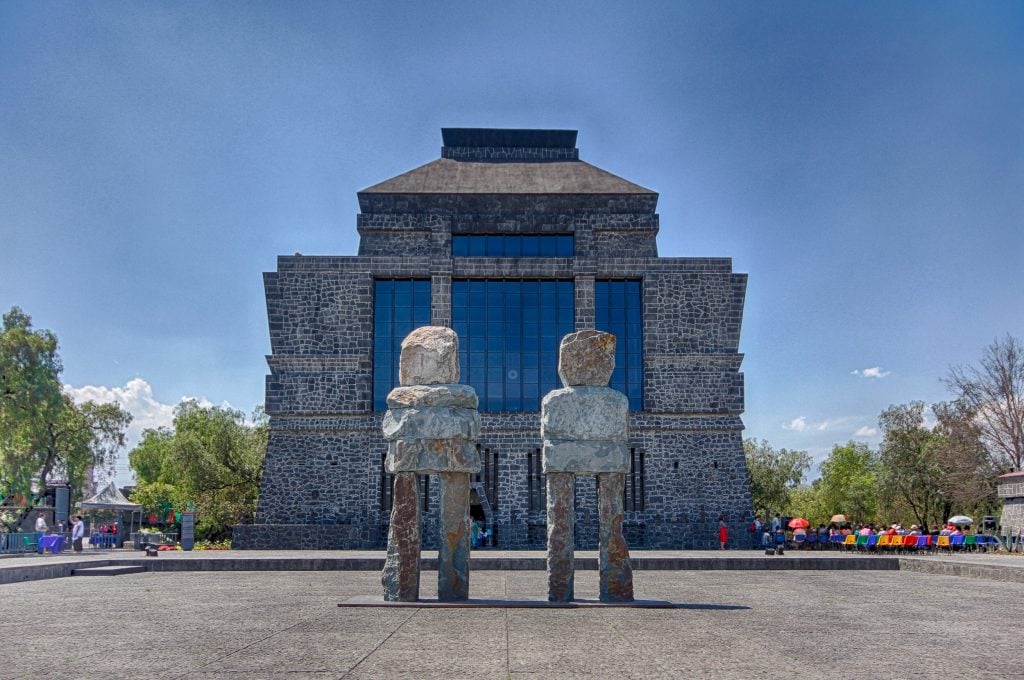Art World
Diego Rivera’s City of Arts, a Sprawling Campus for Creativity of All Forms, Opens in Mexico 80 Years After He First Conceived It
The ambitious project has been designed by the father and son architects Mauricio and Manuel Rocha.

The ambitious project has been designed by the father and son architects Mauricio and Manuel Rocha.

Amah-Rose Abrams

Diego Rivera’s City of Arts, a complex of 13 buildings and more than 64,000 square feet of performance space meant to connect different forms of creative output in one place, has opened in Mexico City—nearly 80 years after the artist first conceived of it. The ambitious project expands on the site of the existing Anahuacalli Museum in Coyoacán, built by the artist to house his massive collection of Mesoamerican art.
Rivera documented his dream of creating a comprehensive City of Arts in a manifesto written 1945 and 1950, but the project went unrealized before his death in 1957. In Rivera’s own words, he wanted “to bring together the artist of the school and the academy with the potter, the weaver, the basket maker, the stonemason, with everything that is a pure and high expression of the people of Mexico”.
The first part of the project, the Anahuacalli Museum, was built in 1963 by architects Juan O’Gorman and Heriberto Pagelson alongside Rivera’s daughter Ruth Rivera Marín. In Rivera’s original plans, this would have been joined by a theatre where traditional and contemporary performances would be held, as well as an experimental cinema, a museum of architecture and free workshops. Rivera wanted the Anahuacalli to be very involved with local schools to make it an authentic part of the community, connecting the Mexican people with the country’s long cultural history.
The completed campus now includes a gallery, library, workshops, and offices, as well as storage for all of Rivera’s 59,000-piece collection, which will be open to the public under controlled access. Designed by the father and son architect team Mauricio and Manuel Rocha, the City of Arts cost 20 million pesos ($960,000) to build and was under construction for six years.
“Dialogue with Rivera and with Juan O’Gorman, who collaborated with him, is one of the most important challenges in my career,” Rocha told the Spanish newspaper El País. “The idea is that, as in pre-Columbian cities, the buildings are connected and allow a relationship between the parts. What we are trying to do is recode Rivera and O’Gorman’s idea in a contemporary language.”
The result is a series of low buildings made from volcanic stone—similar to the material used on the temple-like Anahuacalli Museum—that subtly emerge to form a campus, “so that they have less impact with the stone and the landscape,” Rocha said. “With the new technologies we use, the buildings seem to sail in a kind of sea of lava,” he explained.